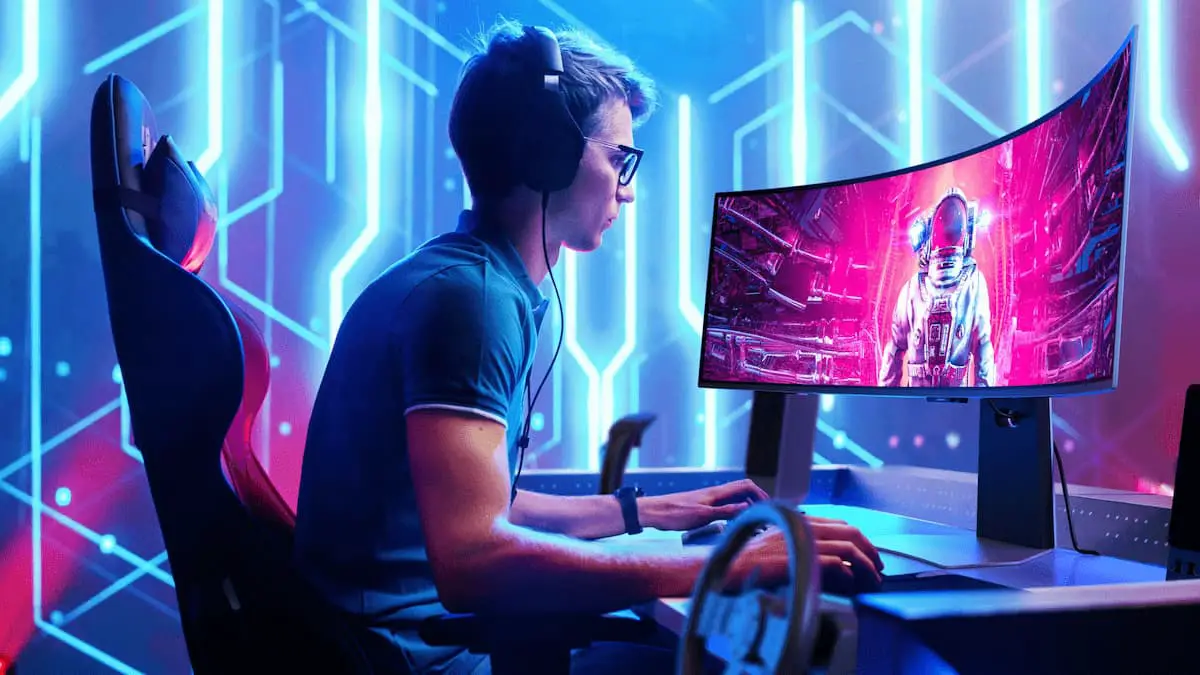When it comes to gaming, your gaming monitor can make or break the experience. It’s crucial to take good care of your hardware, as improper practices reduce its service life and quickly spoil your gaming experience — often before you even realize it. After setting up their monitors, many gamers inadvertently reduce the lifespan and performance of their monitors through certain harmful practices. In this guide, we will dive into the things you should avoid with your gaming monitor to ensure you get the best out of your gaming sessions.
1. Avoiding Proper Calibration
Avoiding proper calibration of your gaming monitor can significantly hamper your gaming experience. A well-calibrated monitor ensures accurate & vibrant colors and optimum contrast, which enhances the overall visual experience.
Improper calibration may lead to washed-out images, incorrect color representation, or darkened details that can negatively impact gameplay.
It’s recommended to use inbuilt calibration tools in your operating system or professional calibration tools for better accuracy.
2. Ignoring Refresh Rate & Response Time Settings
Ignoring the refresh rate and response time settings on your gaming monitor can drastically affect your overall gaming experience.
The refresh rate, measured in Hertz (Hz), dictates how many times your screen updates with new information per second.
A lower refresh rate can result in screen tearing or blurring during fast-paced gaming sequences.
On the other hand, response time is measured in milliseconds which refers to the time it takes a pixel to change from one color to another.
A slower response time can result in ghosting, where an image remains on the screen for longer than intended.
Both factors are critical for maintaining smooth and immersive gameplay and should not be overlooked when optimizing your gaming monitor settings.
3. Using Incorrect Cable Connections
An often overlooked but critical aspect of maintaining a gaming monitor’s performance is using the correct cable connection.
Connecting a monitor to a gaming rig using an inadequate or unsuitable cable can dramatically impact the quality of your gaming experience.
For example, using a VGA cable, which only supports analog signal, on a high-resolution gaming monitor can result in poor image quality and slower refresh rates.
Therefore, it’s imperative to choose cables that meet or exceed your monitor’s requirements.
HDMI and DisplayPort cables, for instance, support both audio and video digital signals, which make them ideal for high-resolution gaming monitors.
Ensuring you’re using the correct cables will allow you to fully utilize your monitor’s capabilities and enhance your gaming experience.
4. Excessive Use
Excessive use of your gaming monitor can lead to an array of problems, both for your health and the longevity of the device.
Prolonged screen time can potentially strain your eyes, causing discomfort and even long-term issues.
It’s recommended to take regular breaks, following the 20-20-20 rule every 20 minutes, and look at something 20 feet away for 20 seconds.
Regarding the monitor itself, constant usage can lead to overheating, which may gradually degrade its performance and lifespan.
Try to shut off the monitor when not in use, and ensure it’s in a well-ventilated area to prevent overheating.
5. Expose To Extreme Conditions
Exposing your gaming monitor to extreme conditions can potentially degrade its performance longevity and may even cause irreversible damage.
Extreme heat can damage the delicate electronic components of the monitor.
Similarly, very cold conditions can cause condensation build-up, leading to short circuits.
High humidity can also introduce moisture into the monitor, which can corrode its components over time.
So always keep your gaming monitor in a controlled environment with moderate temperature and humidity levels for optimal performance and durability.
